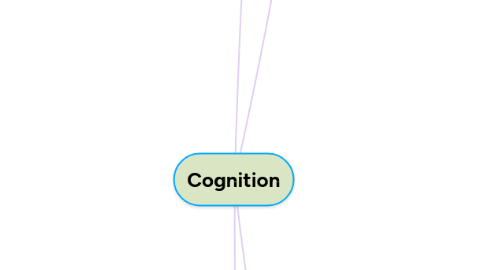
1. Language & its disorders
1.1. How did language develop?
1.1.1. Evolution from animal vocalizations (emotion, imitation, play) – similarity of vocal & gestural neural systems
1.1.2. Development of phonological loop in working memory -phonological loop: ability to hear something and rmb it
1.2. Do animals have language?
1.2.1. Human vocalize while exhaling, chimps while inhaling
1.2.2. Bonobos (Kanzi) & Alex (African grey parrot)
1.3. Language: by-product of intelligence?
1.3.1. Williams syndrome: good language, low intelligence -Good language, musical abilities & sociability -Deficient chromosome 7,
1.4. Language: specialized adaptation?
1.4.1. Humans have innate ability to acquire language (language adaptation device) -Deaf kids learn sign language rapidly: if not taught they invent one -Fox P2 gene develops brain areas for language & jaw/structure for speech in humans
1.4.2. What about bilinguals? -Sensitive period: native-like ability if second language acquired before 2-5 years old
1.5. Language in the brain
1.5.1. Aphasia: loss of language due to injury, intact cognition
1.5.1.1. Broca’s aphasia – nonfluent -Impaired speech, gesture (ASL) production: sparse, agrammatical, poor repetition -Intact comprehension
1.5.1.2. Wernicke’s aphasia – fluent -Impaired comprehension, ordering speech (word salad), object naming (anomia), neologism (create new words), paraphrasia -Intact speech production
1.6. Dyslexia
1.6.1. reading developmental impairment,intact intelligence
1.6.1.1. More in boys & irregular languages like English
1.6.1.2. Difficulty converting symbols into sounds
1.6.2. Treatment: attend to one word at a time
2. Attention & consciousness
2.1. Mind-brain problem
2.1.1. How can a non-physical mind influence a physical brain?
2.1.1.1. Dualism: both are separate entities
2.1.1.2. Monism: both different aspects of same thing
2.2. Consciousness: issues
2.2.1. -Better perception if stimuli is: emotional, congruent with mood (happy stimuli happy mood), dominant eye, moves, familiar
2.3. Defining consciousness
2.3.1. More brain activity (gamma waves, 30-50Hz) in conscious conditions
2.3.2. threshold, all or none
2.3.3. timing influence consciousness
2.3.3.1. Phi phenomenon: optical illusion of perceiving a series of still images as continuous when rapidly viewed
2.4. Attention & consciousness
2.4.1. Inattentional blindness: slow change in complex scene not noticed, unless attending to it
2.4.2. Bottom up vs Top down= dog run by you vs looking for friend in crowd
2.4.3. Spatial neglect: tendency to ignore left side of body - damaged right parietal lobe (More impaired attention)
2.4.3.1. -Better performance if asked to focus on left side (cross arms)
3. Lateralization of function
3.1. What is laterality?
3.1.1. Functional specialization of one hemisphere over the other, leading to dominance
3.1.2. Corpus callosum connects hemispheres
3.1.2.1. Anterior commissure, hippocampus commissure
3.1.2.2. Often severed to prevent epilepsy -Antiepileptic drugs: block Na+ or enhance GABA
3.2. split-brain patients
3.2.1. Patients with severed corpus callosum
3.2.1.1. Perform normally on familiar tasks (tying shoelace)
3.2.1.2. Easily does different tasks with each hand simultaneously
3.2.2. Left hemisphere dominant for language
3.2.2.1. Speech left lateralized, comprehension more equal
3.3. Sperry & split-brain studies
3.3.1. Sometimes information passes through anterior & hippocampus commissures
3.4. Gazzaniga & split-brain studies -Do hemispheres ever compete?
3.4.1. Yes
3.4.1.1. Initially after surgery, conflicting actions (dressing, picking items) common -Brain adapts using smaller commissures
3.4.2. No
3.4.2.1. Learned co-operation
3.4.2.1.1. asked to verbalize guessed colour
3.4.2.1.2. If guess incorrect :right hemisphere would produce frown, left hemisphere detects and corrects itself
3.4.3. Chicken vs shovel
3.4.3.1. Left “interpreter” (Gazzaniga, 2000): tendency of left hemisphere to invent & explain actions, even though true causes are unconscious or unrelated
3.5. The right hemisphere
3.5.1. Non-verbal, holistic hemisphere
3.5.2. Spatial relationships, overall patterns, emotion recognition & processing
3.5.2.1. Damage: socially awkward, clueless, detached, abrupt, apathy, emotionally flat
3.6. Language dominance
3.6.1. WADA test determines hemispheric language dominance (injection of anaesthetic drug)
3.6.2. Language dominance & handedness
3.6.2.1. Planum temporale is larger in left hemisphere – speech, sound processing 65%
4. Social neuroscience – love & empathy
4.1. Oxytocin
4.1.1. Improves recognition of facial expression
4.1.2. Enhances attention to important social cues
4.2. Theory of mind:
4.2.1. understanding mental states enabling explanation/prediction of others’ behavior (medial PFC, superior temporal sulcus)
4.3. Psychopath
4.3.1. Impaired activity & connections in orbitofrontal cortex, insula & limbic system
